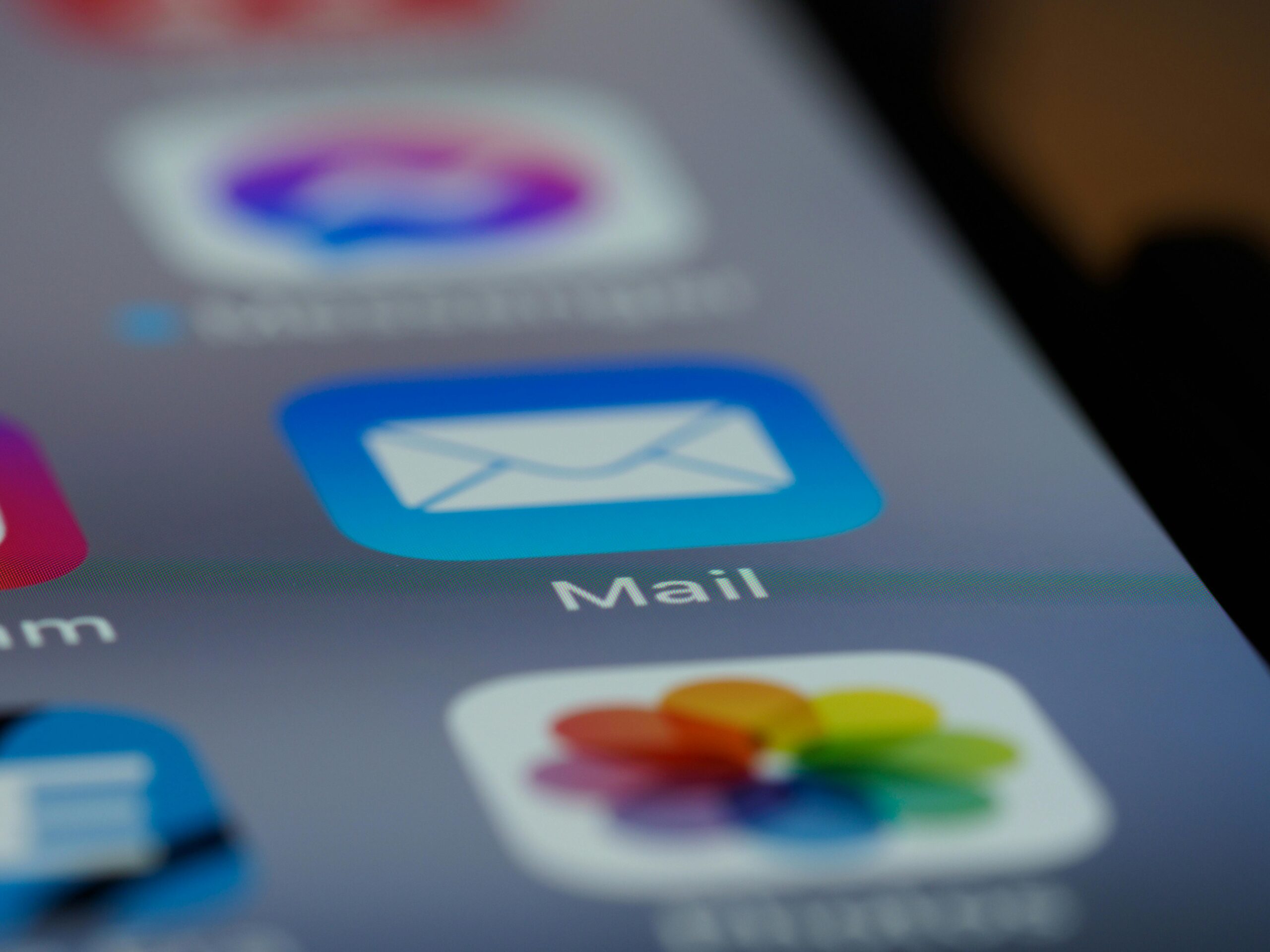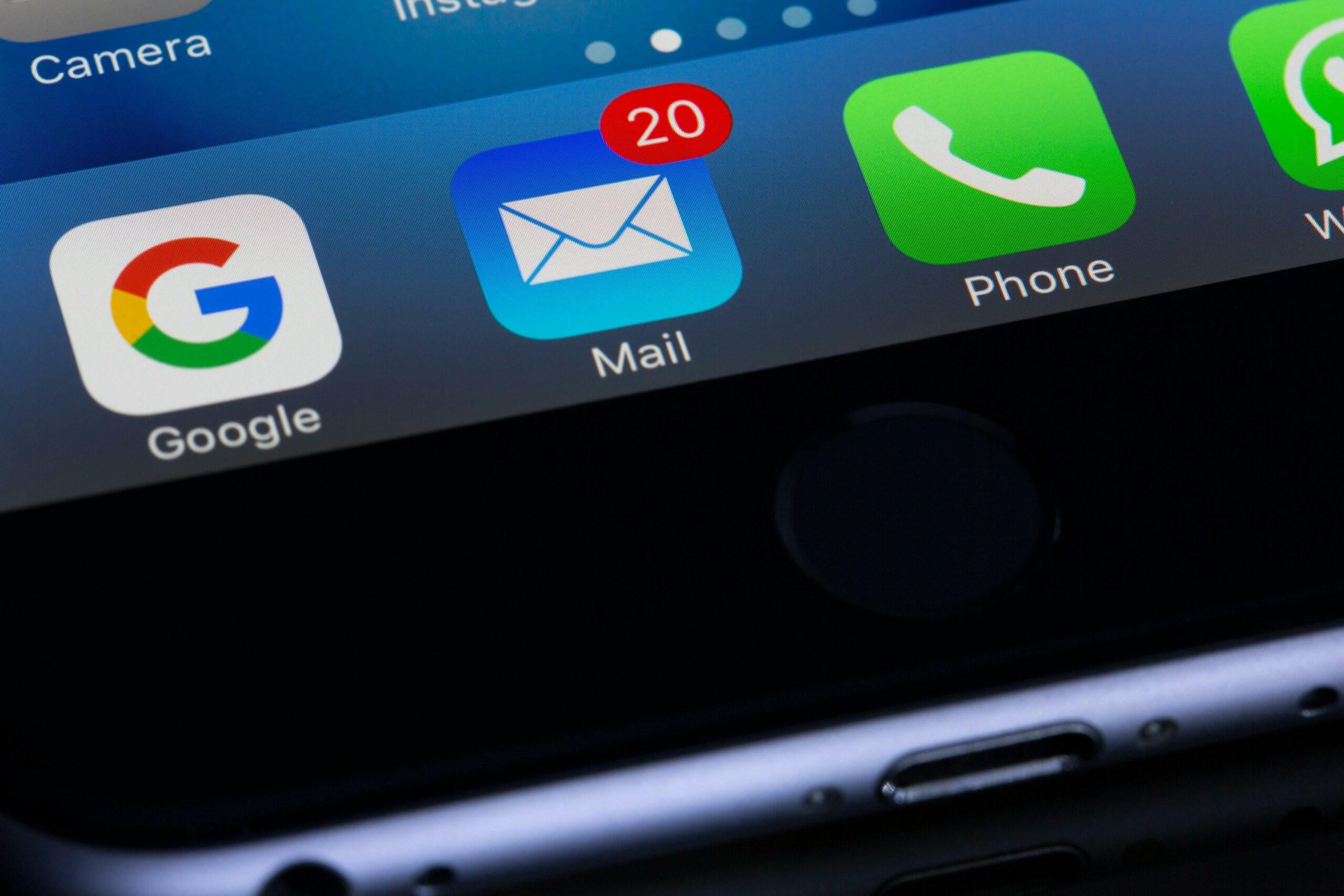Building customer loyalty is essential for any business, yet many struggle to engage their audience effectively. Did you know that well-executed email marketing campaigns can significantly boost revenue and enhance customer retention? In this post, the focus will be on understanding the importance of customer loyalty in email campaigns, crafting compelling email content, and segmenting your audience for targeted outreach. By addressing these key areas, readers will gain practical insights that can transform their email marketing efforts and ultimately drive better results. With the right email marketing software, mastering these strategies can help overcome challenges in creating lasting customer relationships.
Understand the Importance of Customer Loyalty in Email Campaigns

Recognising the benefits of loyal customers is essential for any business looking to thrive through effective email marketing and branding services campaigns. Key metrics can help measure customer loyalty success, allowing businesses to tailor their marketing emails accordingly. Furthermore, understanding the long-term value of retaining customers highlights the effectiveness of loyalty program examples and encourages deeper engagement across platforms, including social media marketing and ppc services.
Recognise the Benefits of Loyal Customers for Your Business
Loyal customers represent a significant asset for any business, particularly in the context of email marketing campaigns. Their willingness to make repeated purchases not only boosts sales but also reduces the costs associated with acquiring new customers through online advertising. Retaining existing customers can lead to increased customer lifetime value, which is a key metric for measuring the success of any marketing strategy, especially those incorporating content marketing.
Understanding the concept of customer loyalty can also enhance the effectiveness of payment systems and overall customer experience. When customers feel valued, they are more likely to engage with promotional emails, responding positively to tailored offers and incentives. This engagement strengthens their connection to the brand, leading to higher open rates and conversions in email campaigns.
Additionally, cultivating customer loyalty promotes positive word-of-mouth advertising, as satisfied customers are more inclined to share their experiences across various platforms. This organic promotion can extend reach and credibility, making it easier for businesses to establish a robust online presence. A loyal customer base not only drives sales but also serves as a foundational element for sustainable growth in the digital marketplace.
Identify Key Metrics to Measure Customer Loyalty Success
Assessing customer loyalty success requires understanding specific metrics that influence email marketing campaigns. Tracking open rates helps gauge how well subject lines engage recipients, while click-through rates indicate the effectiveness of the content and offers included in the email. Consistent analysis of these metrics can inform marketing strategies, allowing businesses to adjust their approach and improve outcomes through targeted email marketing services.
Customer retention rate is another critical metric in measuring loyalty. A high retention rate shows that customers are satisfied with the brand’s products or services and are likely to make repeat purchases. This information can guide future marketing campaigns by allowing companies to focus on strengthening relationships with existing clientele, thus enhancing the scalability of their marketing efforts.
Lastly, the overall customer lifetime value (CLV) provides vital insights into the long-term profitability of loyalty strategies. Understanding CLV enables businesses to allocate resources effectively, ensuring that the cost of payroll and marketing align with the expected returns from loyal customers. This data-driven approach fosters informed decision-making, optimising email campaigns to elevate customer engagement and drive sustained business growth.
Explore the Long-Term Value of Retaining Customers
Retaining customers in today’s competitive landscape significantly enhances a business’s user experience. By fostering strong relationships through targeted email marketing campaigns, companies can ensure that previous buyers feel valued and appreciated, which can lead to repeated purchases of goods. This retention strategy helps businesses not only to maintain a steady revenue stream but also to boost overall customer satisfaction.
Retail loyalty programmes are a crucial element in building long-term relationships with customers. By rewarding loyal patrons through personalised offers and exclusive access to promotions via email, businesses can encourage continued engagement. This strategic approach creates a sense of belonging and trust, which reinforces the commitment of customers to the brand in a regulated environment where consumer preferences and expectations continually evolve.
The internet has created a vast arena for businesses to interact with consumers, making customer loyalty essential for sustainable success. Retaining customers reduces the need to frequently invest in acquiring new clientele, thereby optimising marketing budgets. Implementing a well-structured email campaign that highlights loyalty incentives positions a business to reap the long-term benefits of a dedicated customer base, driving growth and profitability.
Craft Compelling Email Content to Boost Customer Engagement

To cultivate customer loyalty through email marketing, businesses must craft compelling content that engages audiences effectively. Personalisation techniques are essential to resonate with recipients, while a strong subject line can spark curiosity and encourage opens. Easy-to-read content structured for impact, combined with clear calls to action, drives user interaction, fostering stronger connections and distinguishing a brand amid competition.
Use Personalisation Techniques to Resonate With Your Audience
Personalisation techniques play a vital role in enhancing customer engagement in email marketing campaigns. By tailoring email content to reflect individual preferences and behaviours, businesses can create a deeper connection with their audience. For instance, sending personalised gift recommendations based on previous purchases can significantly increase click-through rates and conversions, ultimately fostering greater loyalty among customers.
Utilising tools such as Zapier can streamline the process of personalising emails. By integrating customer data from various platforms, businesses can segment their audience effectively and address specific needs. This targeted approach not only improves lead generation efforts but also enhances the overall customer experience by ensuring that recipients receive relevant content that resonates with their interests.
Incorporating elements of affiliate marketing within personalised emails can further strengthen customer relationships. By providing exclusive offers or incentives linked to affiliate partners, businesses encourage repeat engagement and drive conversion. These strategies highlight a brand’s commitment to its customers, resulting in a loyal clientele that appreciates tailored content and meaningful interactions.
Develop a Strong Subject Line That Piques Curiosity
Crafting a captivating subject line is a fundamental step in enhancing email marketing campaigns aimed at cultivating customer loyalty. A strong subject line not only grabs attention but also piques curiosity, encouraging recipients to open the email rather than dismiss it as potential email spam. Implementing this strategy effectively can significantly improve brand awareness and reinforce the company’s relationship with its audience.
Businesses can leverage customer relationship management systems and autoresponder tools to analyse successful subject lines from previous campaigns. For instance, using A/B testing to compare different subject lines can reveal which variations resonate more with the target audience. This data-driven approach enables marketers to refine their techniques, ensuring that future emails are more engaging and effective in reaching customers.
Additionally, incorporating actionable language that suggests exclusivity or urgency within the subject line can encourage higher open rates. Phrases such as “limited-time offer” or “exclusive insights” create an urge for immediate action, furthering engagement. By focusing on what clients find valuable and their specific interests, brands can consistently maintain a crucial connection with their customers, leading to lasting loyalty through thoughtfully crafted email communications.
Structure Content That Is Easy to Read and Impactful
Structuring content in a clear, accessible manner greatly enhances usability in email marketing campaigns. By breaking down information into short paragraphs and using subheadings, brands can make the content digestible for recipients. This approach not only encourages readers to engage with the email but also fosters a better understanding of the message being conveyed, such as offers related to credit card promotions or account services.
Utilising emotive language can significantly impact how recipients perceive the message. Choosing words that resonate with customers’ feelings enhances engagement and builds a connection. For example, highlighting the satisfaction of meaningful savings or positive experiences can motivate customers to interact with emails, strengthening their loyalty to the brand.
In the realm of accounting-related communications, it is vital to ensure that the messaging remains straightforward and direct. Customers appreciate transparency and clarity, particularly when it comes to understanding service fees or promotional offers. Keeping paragraphs focused and eliminating jargon not only aids in comprehension but also promotes trust, leading to stronger customer relationships.
Include Clear Calls to Action to Drive User Interaction
Clear calls to action (CTAs) are essential components of great email marketing strategies aimed at driving user interaction. A strong CTA guides the target audience on what steps to take next, whether it involves making a purchase, signing up for a newsletter, or following the brand on social media. By incorporating actionable language such as “Get your birthday discount now!” or “Join our community online,” businesses can create a sense of urgency that encourages recipients to engage immediately.
Integrating personal data insights into email campaigns can significantly enhance the effectiveness of CTAs. For instance, personalisation can be achieved by referencing a customer’s recent purchase or birthday to encourage interaction. An email that says, “Your exclusive birthday offer awaits you—click here to claim!” taps into individual customer experiences, making them feel valued and more likely to respond positively.
In order to maximise the impact of CTAs, it is vital to position them strategically within email content to catch the reader’s eye. Visual emphasis, such as using contrasting colours for buttons or bold text, can make CTAs stand out. Furthermore, consistent messaging throughout the email ensures that the call to action aligns with the overall goal, whether that is promoting special offers or fostering greater interaction on social media platforms, enhancing the relationship between the brand and its customers.
Segment Your Audience for Targeted Email Campaigns

Effective customer loyalty in email marketing campaigns hinges on the strategic segmentation of the audience. Businesses can analyse customer data to define clear segments, ensuring that messages resonate with specific groups. Tailored communications enhance service quality by addressing each segment’s unique needs, while continual testing and refinement of these segments improve efficiency within the marketing channel. This approach aligns with the overall business model, leveraging the knowledge base to maximise impact.
Analyse Customer Data to Define Clear Segments
Analysing customer data is a fundamental step in defining clear segments for effective email marketing campaigns focused on cultivating customer loyalty. By employing tools such as Mailchimp, businesses can examine purchase behaviour, preferences, and engagement patterns, allowing for the creation of targeted lists. This segmentation strategy not only improves open rates but also tailors messaging to specific demographics, ensuring that each communication is relevant and engaging for the intended audience.
Incorporating insights from programmes like a Shopify rewards program can enhance segmentation efforts. For example, businesses can identify their most loyal customers and create special offers that resonate with this group. This targeted approach not only drives engagement but also reinforces customer loyalty, as recipients feel acknowledged and valued through custom incentives, which can lead to increased sales over time.
Furthermore, leveraging customer data for segmentation can play a significant role in viral marketing. By understanding the unique characteristics of different segments, businesses can craft compelling content that speaks to each group’s needs, increasing the likelihood of shares and recommendations. This strategy maximises the effectiveness of email campaigns while fostering a loyal customer base that feels a strong connection to the brand, ultimately driving growth and profitability.
Create Tailored Messages for Each Identified Segment
Creating tailored messages for each identified segment is vital for enhancing the overall customer experience in email marketing. By employing omnichannel strategies, companies can address the specific needs and preferences of their audience segments, leading to a more meaningful engagement. For instance, using different language styles and tones suited to each demographic can make the content more relatable and engaging for recipients.
Utilising HTML formatting in email designs aids in crafting visually appealing messages that resonate with targeted segments. Personalisation elements, such as addressing a customer by name or referencing their previous interactions, can significantly increase engagement rates. This focus on detail encourages loyalty as customers feel recognised and valued, which ultimately supports retention goals.
Incorporating segment-specific offers and promotions further enhances the effectiveness of email campaigns. By understanding the unique characteristics of each group, businesses can provide tailored solutions that may include exclusive discounts or fee waivers, encouraging customers to take action. This personalised approach not only results in higher conversion rates but also strengthens the affinity customers feel towards the brand.
Test and Refine Your Segments to Improve Efficiency
Testing and refining segments is a crucial practice for enhancing the effectiveness of email marketing campaigns. By analysing performance metrics, such as the bounce rate, companies can identify which segments engage better and which aspects require adjustment. This data-driven approach allows businesses to stay informed and adapt their strategies to meet customer needs more effectively.
Incorporating tools for search engine optimization can assist in streamlining the segmentation process. For example, utilising analytics software helps companies track customer behaviours and preferences, providing insights into segment performance. By keeping these factors in mind, businesses can create targeted content that resonates with their audience, ultimately driving loyalty and engagement.
Refining segmentation involves continuous testing, which ensures that the company’s marketing efforts become more efficient over time. When segments are reviewed and adjusted in response to real-time data, businesses can minimise missteps and improve their return on investment. This proactive mindset fosters not only customer loyalty but also positions the company for sustained growth in a competitive landscape.
Automate Your Email Marketing for Consistent Outreach

Implementing automated campaigns allows businesses to maintain timely communication with their users, enhancing customer loyalty in email marketing efforts. Setting triggers based on customer behaviour ensures relevance, while monitoring automation performance aids in continuous improvement and maximising return on investment. Integrating these elements with a robust CRM system and effective use of customer data is essential for successful retail strategies.
Implement Automated Campaigns for Timely Communication
Implementing automated campaigns allows companies to maintain timely communication with customers, which plays a crucial role in building loyalty. By using data from customer interactions, businesses can create targeted emails that provide relevant information at the right moment. For example, sending reminders about contract renewals on the due date ensures customers feel valued and attended to.
Integrating chatbot technology into email marketing can further enhance the effectiveness of automated campaigns. Chatbots can gather customer preferences and behaviours, enabling businesses to tailor their communications based on previous interactions. This not only streamlines the process of sending personalised messages but also helps to foster ongoing engagement and loyalty through timely outreach.
Furthermore, consistent analysis of automated campaign performance allows businesses to refine their strategies over time. By evaluating response rates and customer feedback, companies can adjust their messaging and the type of information shared. This continual improvement ensures that communications remain relevant and resonate with customers, reinforcing their connection to the brand and promoting long-term loyalty.
Set Triggers Based on Customer Behaviour for Relevance
Setting triggers based on customer behaviour is a crucial strategy in automating email marketing campaigns. By monitoring actions such as website visits, abandoned carts, and previous purchase patterns, brands can send timely emails that resonate with customer interests. According to statistics, tailored communications enhance engagement and significantly increase the chances of converting cold emails into meaningful customer interactions.
Utilising platforms like Omnisend can streamline the implementation of behaviour-based triggers, allowing businesses to automate responses that nurture customer loyalty. For instance, if a customer signs up for a loyalty program but hasn’t made a purchase in a while, an automated reminder about exclusive rewards can reignite their interest. This personal touch not only encourages repeat purchases but also strengthens the emotional connection between the brand and its customers.
Moreover, employing these targeted triggers fosters an atmosphere of appreciation and relevance, which is vital for cultivating customer loyalty. By understanding when to engage customers with timely offers or reminders, brands can ensure their emails are seen as valuable rather than intrusive. This approach not only boosts retention rates but also solidifies a customer-centric reputation within the market, ultimately aiding in long-term business success.
Monitor Automation Performance for Continuous Improvement
Monitoring automation performance is essential for enhancing email marketing campaigns aimed at building customer loyalty. By analysing metrics such as net promoter score (NPS), businesses can gain valuable insights into customer satisfaction and engagement levels. Tracking the effectiveness of emails related to cart reminders or promotional offers helps identify trends and areas for improvement, ensuring a more targeted approach in future campaigns.
Utilising customer feedback gathered through various channels, including SMS responses, can provide additional layers of understanding regarding campaign performance. By integrating feedback loops, businesses can adapt their strategies based on direct customer input, allowing for a more responsive and effective email marketing system. This proactive approach enables brands to address concerns and adjust campaigns, leading to improved customer retention rates.
Incorporating a wysiwyg (what you see is what you get) editor into email design enables marketers to create visually appealing content that resonates with their audience. By continually refining the campaign’s layout and content based on performance metrics, businesses can enhance user experience and strengthen their relationship with customers. Regular assessments of engagement levels and user feedback foster a culture of continuous improvement, ultimately cultivating greater loyalty through effective email communications.
A/B Test Your Email Strategies for Optimal Results

A/B testing strategies are pivotal in optimising email marketing campaigns aimed at boosting customer loyalty. Businesses should develop hypotheses to evaluate different email elements, including layout and content variations. By executing these tests and assessing results with tools like HubSpot and web analytics, brands can make informed decisions that maximise profit while enhancing customer service satisfaction and ultimately saving money.
Develop Hypotheses for Testing Different Email Elements
Developing hypotheses for testing different email elements is crucial for refining marketing strategies that promote customer loyalty. For instance, a brand might hypothesise that changing the call to action within an email could increase click-through rates. By comparing versions of an email with varying wording, such as using “Claim Your Coupon Now!” against “Get Your Discount Today!”, marketers can gather data on which phrase resonates more effectively with their audience and drives higher engagement.
Another approach involves testing the placement and design of coupons within email communications. A hypothesis could suggest that featuring a coupon prominently at the top of the email yields better redemption rates than placing it further down. By using platforms like Brevo for conducting these tests, businesses can evaluate the results from diverse placements to understand customer preferences, ensuring that each email is optimised for maximum impact.
Furthermore, insights from experts like Fred Reichheld on customer loyalty can guide marketers in forming hypotheses about email content. For example, one might theorise that emails conveying a personal touch, such as including the recipient’s name in the subject line, will enhance overall engagement and loyalty. Rigorous A/B testing of such elements enables businesses to create a more tailored experience that addresses customer needs, ultimately fostering a stronger connection with their brand through each email campaign.
Execute Tests to Compare Variations in Layout or Content
Executing A/B tests by comparing variations in layout or content is a crucial aspect of enhancing email marketing campaigns that aim to foster customer loyalty. For instance, a business could test two different email templates—one featuring a prominent call-to-action button while the other utilises a traditional text link. Tracking consumer behaviour through open rates and click-through rates can reveal which design leads to higher engagement and conversions, ultimately influencing the effectiveness of loyalty rewards program examples.
Moreover, by analysing the percentage of recipients who interact with each version, marketers can gain insights into how formatting affects user response. For example, placing compelling offers or credit promotions at the beginning of the email may result in increased engagement compared to a layout where these elements are less visible. Conducting such tests allows businesses to optimise their communications based on clear data rather than assumptions about customer preferences.
Finally, documenting the outcomes of these tests enables brands to understand prevailing trends in consumer behaviour regarding email marketing. Adjustments based on these findings can lead to more effective outreach strategies, ensuring that email content resonates with targeted audiences. Effectively managing these variations not only supports immediate campaign goals but also enhances long-term customer loyalty, driving sustained engagement and overall business growth.
Assess Results to Inform Future Email Marketing Decisions
Assessing the results of A/B tests provides valuable insights that can significantly inform future email marketing strategies in the finance sector. By carefully analysing data from various campaigns, businesses can understand which elements resonate most with their audience. This informed approach allows companies to refine their loyalty system for small business, ensuring that promotional emails drive customer retention effectively.
Utilising a dashboard to visualise these results helps stakeholders see clear trends and make data-driven decisions. For instance, if one version of an email demonstrating financial tips results in a higher engagement rate among clients in the United States, future emails can be tailored similarly. This strategy not only enhances communication with the audience but also fosters stronger connections, essential for cultivating loyalty in an increasingly competitive market.
Moreover, reflecting on A/B testing outcomes can highlight opportunities for improvement in customer engagement. If specific subject lines or content types consistently underperform, businesses can pivot their strategies to better align with customer preferences. Adapting communications based on these insights can optimise future campaigns, ensuring they resonate with target segments and effectively bolster long-term customer loyalty.
Build Customer Trust With Email Communication

Maintaining transparency about data usage and privacy is fundamental in building trust through email campaigns. Sharing valuable content that addresses customer needs enhances the overall experience and reinforces loyalty marketing efforts. Encouraging feedback fosters stronger relationships, ensuring customers feel valued. These topics will be explored in detail, highlighting practical strategies for effective email communication that nurtures loyalty through trust.
Maintain Transparency About Data Usage and Privacy
Transparency about data usage and privacy is essential for building customer trust within an email marketing strategy. Businesses that maintain clear communication regarding how subscriber information is collected, stored, and used can foster a more secure environment for their mailing list. By openly addressing these concerns, companies can alleviate customer anxiety, reinforcing a culture of trust and reliability with their audience.
Employing email marketing tools that allow users to easily manage their preferences can further enhance this transparency. For instance, providing options to update personal information or opt out of certain emails can empower customers and demonstrate respect for their privacy. This proactive approach can also positively impact the overall image of a brand, showing a commitment to ethical practices in data handling.
Additionally, incorporating privacy policy information prominently in email communications can serve as a vital reassurance for recipients. By detailing what data is collected and the purpose behind it, brands can help customers feel informed and respected. This kind of transparency not only strengthens relationships but also encourages long-term loyalty, as customers appreciate knowing their information is safeguarded within an email marketing framework.
Share Valuable Content That Addresses Customer Needs
Sharing valuable content that addresses customer needs is essential for building trust through email communication. When businesses provide resources such as ebooks or access to a comprehensive library of information, they demonstrate a commitment to enhancing customer knowledge and experience. This proactive approach to sharing relevant content not only aligns with the expectations of today’s consumers but also showcases a brand’s authority in its field.
Incorporating customer feedback and preferences into the content strategy allows for a more tailored approach that resonates with the audience. Experimenting with different types of content, such as informative articles or detailed policy updates, can help identify what best meets consumer needs. By continually refining this workflow based on insights gained from engagement metrics, businesses can increase the relevance and impact of their communications.
Moreover, creating a consistent rhythm in content sharing reinforces the brand’s reliability and commitment to customer-centric practices. Businesses that regularly update their email campaigns with fresh, useful insights not only keep customers informed but also foster a sense of loyalty. This strategy encourages customers to view the brand as a trusted partner, ultimately driving deeper connections that contribute to long-term success in email marketing campaigns.
Encourage Feedback to Strengthen Relationships With Customers
Encouraging feedback from customers is paramount in building trust through email communication. By including simple feedback requests within transactional emails, businesses can gather insights on customer satisfaction without overwhelming recipients or risking spamming. For instance, a mobile app might prompt users to rate their experience after an update, allowing brands to understand user concerns and improve their services accordingly.
Research shows that when customers feel their opinions matter, they develop a stronger connection with the brand. Incorporating feedback mechanisms within email designs, such as interactive surveys or direct reply options, empowers customers to voice their experiences and suggestions. This practice not only demonstrates a commitment to customer engagement but also enhances the quality of future email campaigns based on the insights gathered.
A responsive approach to feedback fosters loyalty by showing customers their input shapes the brand. Brands that act on feedback, whether through improved mobile app features or refined email content, reinforce the notion that customer opinions are valued. This level of engagement not only reduces the chances of disengagement but also converts casual customers into loyal advocates, driving consistent growth through effective email marketing strategies.
Conclusion
Cultivating customer loyalty through email marketing campaigns is essential for driving sales (especially if you run an online shop – ecommerce email marketing can be revolutionary) and enhancing brand recognition. By employing personalisation techniques, clear calls to action, and strategic segmentation, businesses can create engaging content that resonates with their audience. Fostering trust through transparency and valuable communications further strengthens the customer relationship, encouraging repeat purchases and long-term satisfaction. Ultimately, these strategies not only optimise marketing efforts but also lay the foundation for sustainable business growth and a loyal customer base.


